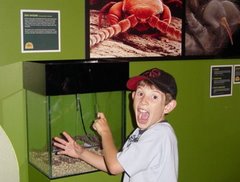Reading this interesting report at the moment - Logging On: Culture, participation and the web. Published on the Demos website and written by John Holden, it is a fascinating account of a major online initiative funded by the Department for Culture, Media and Sport in the UK. Some of the key points I picked up [my comments in square brackets]:
* Trends in internet developments show move from passive --> active; unidirectional --> interactive and from few --> many
* Early use of internet in museums was to digitise content
* 2007 use of internet was transformed in the UK through uptake of broadband with the net becoming the primary way that people access information. As well online commerce has transformed the music and film industries [who have had to respond to the illegal use of downloading to making it easy to do and minimal cost]
* “Rather than people using technology to adapt to their own needs, they are now using the capacity and functionality of technology to create and shape new potential.” (p.17)
* “... new web tools, greater computing power, better connectivity and increased uptake have changed the perception of the cultural possibilities of the internet from being a passive pool of digital information to being a vibrant fourth dimensions of life with limitless opportunities for interaction.” (p.17)
* Museums need strategy of user-generated content – this was why culture online was successful in actively engaging young people and adults in generating their own content
* The organisations in the pilot learned, as well as users developing their own IT skills and deeper understanding of the content
* [lessons for us – share resources such as developer expertise and project management; build projects across institutions and content areas. Is climate change/sustainability one we could do in Sydney?? Indigenous/Pacific stories are another]
* Lessons section (p.33 on):
# Need an external broker to bring partners together
# Clear project plan, roles and responsibilities
# Some institutions not used to rigorous project management systems – through the commissioning process gave them contractual obligations to deliver
# Need absolute clarity about who creates, controls [and signs off on] content
# IP needs to be sorted
# Need a recognised and established lead partner (i.e. the big museums) who can bring organisational resources to the project
# Start small-scale and move up from there
* Challenges:
# Bureaucracy often want control – therefore be clear on goals and responsibilities up-front
# Focus on user means that child protection is a big issue
# Sustainability needs to be factored in
# Need specialists in both the technology and the content [and the audience??]
* Useful section on moderation pp.39-40
* The Tate considers its website as the 5th gallery
* People don’t want to abandon the physical object, just want to find new ways to communicate about it
* “New web tools enable users collectively to express their preferences through their actions, without having to be asked.” (p.44)
* All the tools that Web 2.0 offers "... extend beyond simply the digitisation of data to models of linking and sharing information." (p.45)
Subscribe to:
Post Comments (Atom)



1 comment:
Hi Lynda, one of the online initiatives that has the possibility of being really useful is the Picture Australia group on flickr.
http://www.flickr.com/groups/pictureaustralia_ppe/
This allows people to offer their own photos to the Picture Australia collection.
One of my main concerns about user-generated content is that there is likely to be lots of low-quality stuff to sort through. There need to be systems for selecting and curating to help sort the potentially useful from the sheer volume of stuff.
More work for curators! That should help grow the industry!
Post a Comment